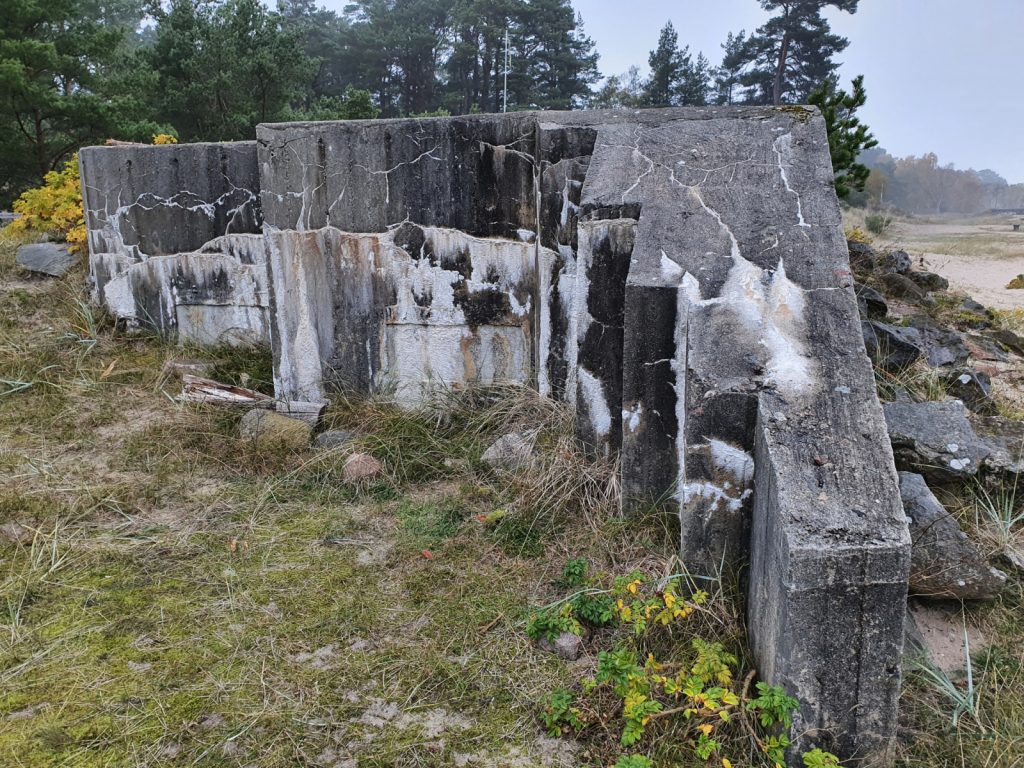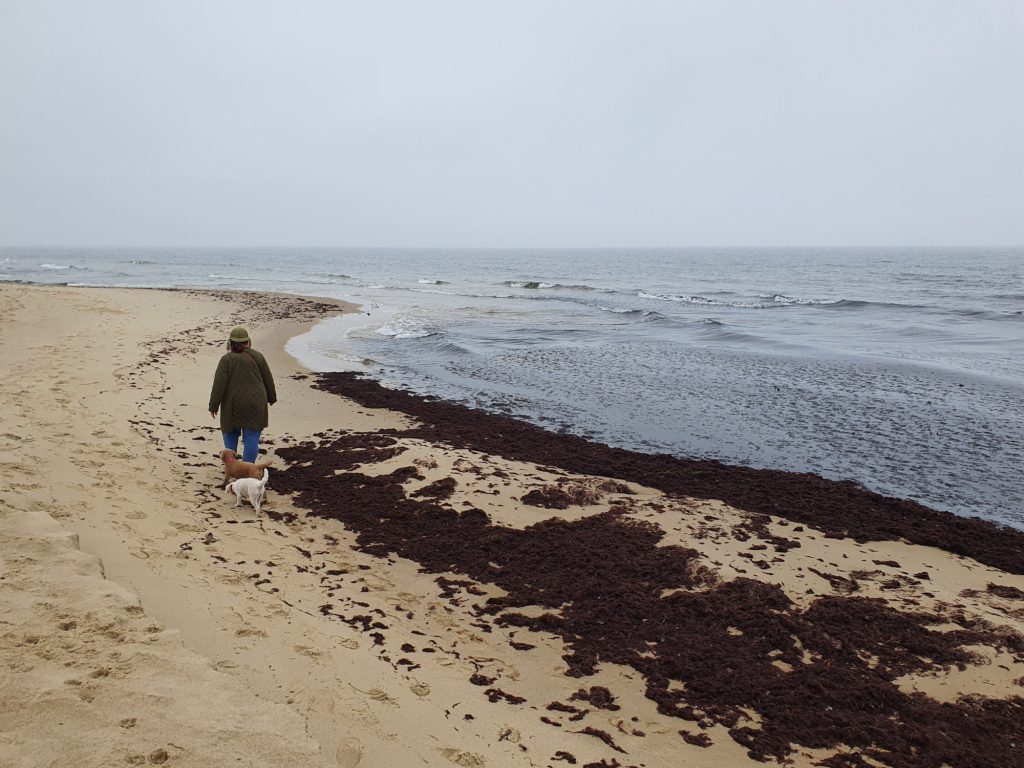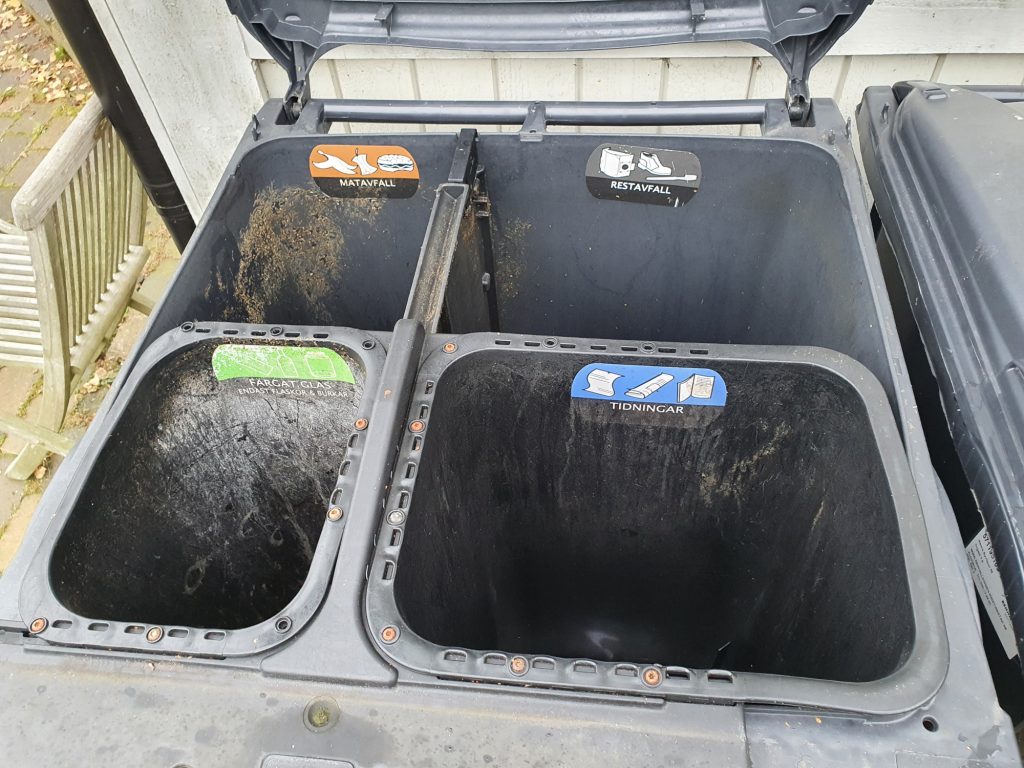During our walk along the beach at lunchtime, I stumbled upon, what I thought looked like, coastal defences set back and jutting out of the sand. As soon as we returned to the house, I set about finding out about them.

The Skånelinjen was built during the Second World War in order to protect Sweden from invasion. Attack from the Baltic Sea was clearly a threat. It is also called the Per Albin Line after the Prime Minister who was responsible for its construction.
Planning had started in 1938 but things started in earnest following Germany’s invasion of Denmark. Eventually there were 1000 fortifications placed at intervals of 300 to 400 metres along the coast. A massive undertaking.
Then, during the Cold War, anti-tank defences were added.
The whole thing wasn’t decommissioned until the 1990’s. The remains are wonderful relics but also stark reminders of war.
The beach was all a bit stark today as well. Grey and gloomy though not as windy as yesterday. We walked between Mirinda’s work meetings.

The other big thing that happened today was the rubbish collection.
It has taken me a few days to work out the system but I think I have it pegged.
Each house has (at least) two big, black three-wheeled Otto-like bins. They are numbered 1 and 2. Each bin is divided into four sections and each section is for different types of rubbish. Here is one of them:

Clockwise from the top left, they are for food waste, other rubbish, paper and non-white glass.
Unfortunately, I didn’t see the garbage truck empty it because I’d love to know how that works. Perhaps I’ll have more luck in Stockholm. Suffice it to say, the Swedes take their recycling seriously.
Apart from the thrills of finding coastal defences and how to sort my rubbish, today was spent mostly working (Mirinda) and researching (me). Oh, and I made a rather successful frittata.

Today, this happened
500 years ago, today, Portuguese sailor, Fernão de Magalhães, discovered, what he called, the Strait of Magellan. His Anglicised name is Ferdinand Magellan, and he was, frankly, pretty bloody incredible.
His life reads like a Boy’s Own Annual packed full of adventure, life risking and heroics. There’s even a bit of betrayal.
While he was born in Portugal and served his country extremely well through sea battles far and wide, he was condemned for illegally dealing with the Moors. This was clearly an anti-Magellan plot because he didn’t do anything of the sort. Which is partly why he sailed under the Spanish flag when he made his successful attempt at globe circumnavigation.
Not that he, personally, made it all the way back. He was killed in the Philippines while trying to convert a bunch of natives on the island of Mactan to Christianity. I assume their own belief system had served them well enough in the past and therefore, some other mythology was not required.
Besides, I can only further assume that they didn’t speak Spanish and possibly misunderstood the request to fall to their knees and have someone draw an invisible cross on their foreheads.
Still, back to this momentous day.
Originally, when he found and navigated it, Magellan named it Estrecho de Todos los Santos which translates to Strait of All Saints, but it was renamed, by the Spanish King Charles V, to posthumously honour him.
There doesn’t appear to be any evidence that the natives of the Strait ever had a name for it although they had been there for thousands of years. This is possibly because after the Europeans found them, they killed most of them off with European diseases against which the natives had no resistance.
The Strait divides the southern end of South America and Tierra del Fuego, somewhere I’ve always wanted to visit but probably never will.
It’s not the easiest passage to sail through because of various narrowings and cross winds but was considered a lot better than Cape Horn. Until the Panama Canal opened, it was the main way through. In fact, Cape Horn was discovered almost 100 years after the Strait of Magellan. I guess that shows how good the Strait was that sailors didn’t feel the need to keep heading south.
Magellan’s life, in particular his discovery of the Strait, makes for an amazing read. For a rollicking adventure, I found Over the Edge of the World by Laurence Bergreen to truly fit the bill. Obviously, there’s many others…but I haven’t read them.
Of course, today was also The Battle of Trafalgar, but everyone knows that.


